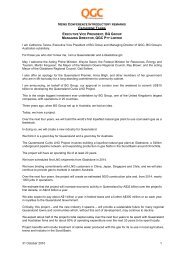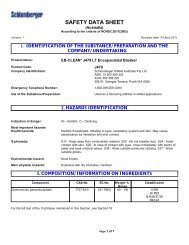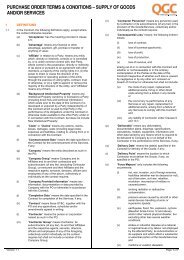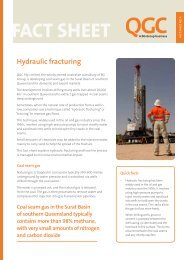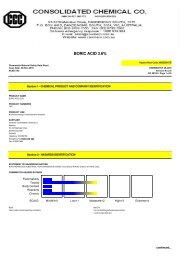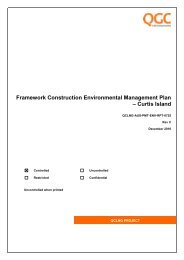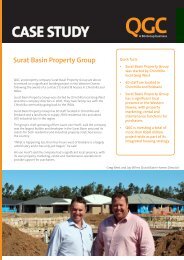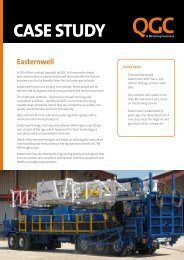Pest and Weed Management Plan - QGC
Pest and Weed Management Plan - QGC
Pest and Weed Management Plan - QGC
You also want an ePaper? Increase the reach of your titles
YUMPU automatically turns print PDFs into web optimized ePapers that Google loves.
<strong>Pest</strong> <strong>and</strong> <strong>Weed</strong> <strong>Management</strong> <strong>Plan</strong>Rev 0May 2011Aquatic weed distribution maps produced by Biosecurity Queensl<strong>and</strong> are provided in Appendix7;<strong>QGC</strong> Gas Field distribution maps will be produced as field distribution data is continually collated<strong>and</strong> updated.<strong>QGC</strong> dams will be monitored to ensure there is no translocation of aquatic weeds associatedwith water releases.4 <strong>Pest</strong>s4.1 Relevant LegislationIn Queensl<strong>and</strong>, the L<strong>and</strong> Protection (<strong>Pest</strong> <strong>and</strong> Stock Route <strong>Management</strong>) Act 2002 (LP Act) is therelevant legislation regarding animal pests. The LP Act <strong>and</strong> the L<strong>and</strong> Protection (<strong>Pest</strong> <strong>and</strong> Stock Route<strong>Management</strong>) Regulation 2003 (LP Reg.) provide legislative measures to manage pests <strong>and</strong> address theimpacts they have on the economy, the environment <strong>and</strong> society. The Department of Employment,Economic Development <strong>and</strong> Innovation (DEEDI) administers the pest provisions of the Act <strong>and</strong> itsregulation.There are three classes of declared animals under the L<strong>and</strong> Protection (<strong>Pest</strong> <strong>and</strong> Stock Route<strong>Management</strong>) Act 2002. These animals are targeted for control because they have, or could have,serious economic, environmental or social impacts. Class 1, 2 <strong>and</strong> 3 declared animals are listed inAppendix 8.Class 1 pests are not commonly present in Queensl<strong>and</strong> <strong>and</strong>, if introduced, would cause anadverse economic, environmental or social impact. Class 1 pests established in Queensl<strong>and</strong> aresubject to eradication from the state; if such a pest is sighted it must be reported to the DEEDI.Class 2 pests are established in Queensl<strong>and</strong> <strong>and</strong> have, or could have, an adverse economic,environmental or social impact. L<strong>and</strong>owners must take reasonable steps to keep their l<strong>and</strong> freeof Class 2 pest.Class 3 pests are well established in Queensl<strong>and</strong> <strong>and</strong> have an adverse economic, environmentalor social impact. L<strong>and</strong>owners are not required to control Class 3 pests unless the l<strong>and</strong> isadjacent to an environmentally significant area. There are a number of environmentallysignificant areas in <strong>and</strong> around the <strong>QGC</strong> Gas Field tenements as shown in the <strong>QGC</strong> Gas Fields<strong>and</strong> Environmentally Significant Areas map contained in Appendix 2.Under the Local Law provisions of the Local Government Act 1993, a local government can declare anyanimals not declared under the LP Act <strong>and</strong> enforce their control. For example, Eastern Grey Kangaroo,Macropus giganteus, is not a declared pest, yet is a perceived pest when in overabundance. Nondeclaredanimals of concern when in excessive numbers may have significant economic <strong>and</strong> social35 of 100



